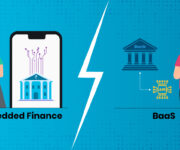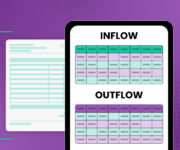Loan applicants today expect a quick, convenient financing process from the first step to funds arriving in their account. Lenders now rely on ever-evolving technology to meet these expectations. For example, they leverage reliable systems to track each step of the process through origination and its payment lifecycle.
A sound understanding of loan origination and management processes helps financial institutions provide a seamless borrowing experience to customers. The Loan Management System (LMS) and the Loan Origination System(LOS) are two specialised systems that tackle different stages of the loan lifecycle but work together to handle loans effectively.
Let us explain how the LMS and LOS work and focus on the difference between both.
What Is a Loan Origination System (LOS)?
A loan origination system helps financial institutions streamline the complex processes of sanctioning loans. It automates the workflow and manages the document collection and approval process digitally, significantly lowering delays. Leveraging data and rules helps make preliminary loan approval decisions faster.
The loan application process for different loans and various lenders may vary slightly.
The Loan Origination Process: A Step-by-Step Breakdown
- Application and Data Capture: The customer initiates the loan process, and LOS securely collects their information.
- Credit Review and Verification: The institution assesses borrower creditworthiness and verifies provided data.
- Risk Assessment and Decisioning: Lenders analyse risk and use scoring models for loan approval decisions.
- Document Management and Workflow: LOS automates forms, document collection and tracks the approval process.
- Interest Rates and Loan Terms: The tool also determines rates and terms based on risk, and the customer receives a proposal.
- Compliance and Risk Mitigation: LOS safeguards regulatory compliance, generates reports, and helps minimise fraud.
What Is the Loan Management System (LMS)?
The loan management system triggers after the loan is disbursed to the customers. A LMS provides lenders visibility into all aspects of the lending cycle after loan origination.
The system helps lenders track the loan status, gain insights based on the collected data, and provide borrowers with the support they need when making payments. Lenders can identify existing gaps (if any) in their loan servicing infrastructure before they become a problem.
Key Features of a Powerful Loan Management System (LMS)
- Account Creation and Management: The LMS meticulously tracks loan details and payment activity.
- Delinquency Tracking and Collection: Proactive delinquency management with automated alerts and communication.
- Reporting and Analytics: In-depth insights into loan performance for data-driven decision-making.
- Compliance Management: Adherence to regulations with streamlined compliance reporting.
- Borrower Self-Service: Secure online portals for borrowers to manage their loans independently.
- Customer Support and Retention: Tools to address financial hardship and enhance the borrower experience.
Difference Between Loan Origination Software and Loan Management Software
Both systems help improve the borrower’s journey and contribute to the overall health of a loan portfolio. However, they handle different stages in the loan lifecycle and serve distinct purposes.
Here are some of the major differences between LOS and LOM:
1. Functionality
The loan origination system focuses on streamlining the loan origination step, while the loan management system concentrates on managing loans post-disbursement.
LOS handles tasks like verifying borrower information, calculating loan terms and so on, from the initial loan application to the approval. LMS is more about ongoing loan management and takes over after loan approval and funding.
2. Utility
The LOS helps lenders expedite the loan approval process through faster document verification, automated decision-making, and compliance with regulatory requirements. On the other hand, the LMS caters to long-term loan management by providing services like customer support, predicting defaults, and sending reminders.
So, the LMS can be imagined as the customer service department for loans, while the LOS is the sales department.
3. Benefits
The LMS enhances loan servicing efficiency, customer engagement and satisfaction, while the LOS accelerates funding processes and reduces delays due to inefficiencies or manual processing.
A loan origination system helps lenders conduct due diligence and comply with regulatory standards more effectively and offers the following benefits:
- Faster loan processing times
- Improved underwriting accuracy
- Enhanced customer experience
The loan management system helps lenders provide borrowers with customised payment reminders and on-demand access to information on loans. Lenders get better visibility, which helps them understand the nuances of the lending cycle.
The key benefits include:
- Operational efficiency improves
- Better compliance with regulations and reporting
- Enhanced customer service for loan repayment
In Conclusion
Despite focusing on different stages in the loan lifecycle, the loan origination system and the loan management system help lenders manage loans seamlessly. In summary, both are essential tools for lenders, and understanding their differences helps them employ the right means to optimise lending operations.
Finezza offers a robust Loan Origination System suited for this tech-driven era that caters to lending needs and helps provide a better customer experience. Automatic document identification, easy integration with APIs, loan eligibility estimator, 360° customer profile assessment, and more are some of its unique features.
The Loan Management System supports multi-loan types, flexible repayment frequencies and payment modules and provides bank payment reconciliation.
Call now to learn more and book a free demo today!




Leave a Reply